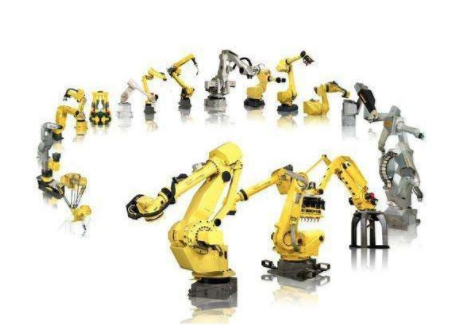Technical parameters are the direct expression of the gap between different industrial robots. Different robot technical parameters have different characteristics, which correspond to their different application ranges. Industrial robots are high-precision modern mechanical equipment with many parameters. When enterprises select industrial robots, they should What parameters are you paying attention to?

Let's take a look at the 7 major technical parameters that industrial robots deserve attention.
Degree of freedom
The degree of freedom can be explained by the number of axes of the robot. The more the number of axes of the robot, the more degrees of freedom, the greater the flexibility of the movement of the mechanical structure and the versatility. However, the increased degree of freedom makes the structure of the robot arm complicated and reduces the rigidity of the robot. When the degree of freedom on the arm is greater than the degree of freedom required to complete the work, the extra degrees of freedom provide the robot with a certain ability to avoid obstacles. At present, most robots have 3 to 6 degrees of freedom, which can be selected according to the complexity and obstacles of actual work.
2. Drive mode
The driving method mainly refers to the power source form of the joint actuator. Generally, there are hydraulic drive, pneumatic drive, and electric drive. Different drive modes have their own advantages and characteristics. They are selected according to their actual work requirements. The way of electric drive. The main advantage of the hydraulic drive is that it can output a large driving force with a small drive. The disadvantage is that the oil is easy to leak and pollute the environment. The main advantage of the pneumatic drive is that it has a good buffering effect and can realize stepless speed change. The disadvantage is that the noise is large. The advantages of electric drive are high drive efficiency, ease of use, and low cost.
3. Control method
The control mode of the robot is also called the way of controlling the axis. It is mainly used to control the movement track of the robot. Generally speaking, there are two control modes: one is servo control and the other is non-servo control. The servo control mode can be subdivided into continuous track control class and point control class. Compared with the non-servo control robot, the servo control robot has a large memory storage space and can store more point addresses, which can make the operation process more complicated and stable.
4. Working speed
Working speed refers to the angle or distance of movement of the mechanical interface center or tool center point in unit time during the uniform motion of the robot under a reasonable working load. Simply put, the higher the maximum working speed, the higher the work efficiency. However, the working speed takes more time to accelerate or decelerate, or the maximum acceleration rate or maximum deceleration rate of the industrial robot is higher.
5. Work space
The working space refers to the maximum range of the origin of the end effector coordinate system when the robot manipulator is working normally, or the space volume occupied by all the points. The size of the working space is not only related to the size of each link of the robot, but also to the overall structural form of the robot. The shape and size of the workspace is very important. When the robot performs a certain job, it may not be able to complete the task due to the deadzone that the hand cannot reach.
6. Working load
The maximum amount of load that the robot's wrist can withstand when the robot is operating within the specified performance range. The working load depends not only on the quality of the load, but also on the speed and direction of the robot's speed and direction of operation. In order to ensure safety, the technical load is determined as the carrying capacity at high speed. In general, the working load refers not only to the quality of the load, but also to the quality of the end effector of the robot.
7. Working accuracy, repeatability and resolution
Simply speaking, the working precision of a robot is the error generated by each position of the robot. The repeating precision is the mean value of the error caused by the robot repeatedly positioning a position, and the resolution is the minimum moving distance that each axis of the robot can achieve. Or the smallest angle of rotation. These three parameters work together on the working accuracy of the robot.
Network Accessories, Network Products, Network Items, Network Equipment, Internet Accessories
Chinasky Electronics Co., Ltd. , https://www.cctv-products.com